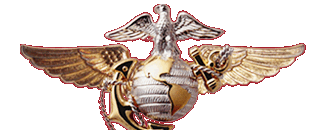MCARA Aircraft > Grumman EA-6A Intruder - Notables
The history of the EA6A program is not complete without mentioning the names of several of the key people who helped make it happen. The origin of the operational requirement dates back to 1959 at least. MCARA member retired Major Reece Woodard remembers an F3D-2Q follow-on requirements meeting hosted by VMCJ-1 at MCAS El Toro before the squadron deployed to Japan in late 1959. Captain Poss Maranville, a senior ECMO chaired the meeting in preparation for a trip back to Grumman where they were well into the A2F-1 attack aircraft development.
Late in 1960, Grumman assigned project engineer Lew Sheuer to do a feasibility study for an A2F-1 ECM variant to replace the F3D-2Q. Follow-on work on this project picked up momentum in the Summer of 1961 and at some point later that year gained HQMC approval. A budget line was established in FY-62 and an award of a development contract to Grumman was made in March 1962 by the Navy Bureau of Weapons (BuWeps), the forerunner of the Naval Air Systems Command (NAVAIRSYSCOM). Then Colonel Keith McCutcheon was DC/S Aviation during this timeframe. (General McCutcheon was later the first 4 star aviator and ACMC)
The A2F-1H development, designated EA-6A Intruder later in 1962, came under the A-6A program office at BuWeps headed by Lt. Col Edwin H. “Skinny” Finlayson. Major Howie Wolf was assigned to oversee the development effort as project officer in the Attack Design Branch. Major Bob Farley was the key Marine in the BuWeps Avionics Branch responsible for development of the mission critical ECM systems. On the contractor side, Al Rogers, the Grumman A-6A program manager also assumed cognizance over the EA-6A prototype development. The first flight of the electronics prototype 148618 was in April 1963 and the successful initial tests resulted in a limited production contract in FY-63 for 12 aircraft.
In this timeframe, Major Stan Cox relieved Bob Farley in the Avionics Branch then under the new NAVAIRSYSCOM. CWO-3 Marty Lachow, a senior EF-10B ECMO, joined the Naval Air Test Center at Patuxent River Maryland as the lead for EA-6A systems test. Howie Wolf was relieved by Lt. Colonel Phil Shutler, who became the first EA-6A class desk officer in NAVAIR. Major E.J. Love took over the requirements desk (AA3C) at HQMC Department of Aviation now headed up by Maj Gen Robertshaw.
By all accounts there were numerous technical and financial hurdles that had to be overcome and without the concerted efforts of the above Marines and the Grumman team the fledgling program would not have survived since the Navy had opted to wait for a then paper EA-6B. The initial aircraft were delivered to the Naval Air Test Center for engineering tests and BIS trials in 1965. Stan Cox and Phil Shutler at NAVAIR meanwhile was having to deal with the design problems with the off the shelf ALQ-53 receiving system and initiate an in-the- field program fix at MAG-14 and VMCJ-2 by Syracuse University Labs. They got full support from Colonel Finlayson then the CO of MAG-14.
The next generation ALQ-76 jammer program was also experiencing delays at Raytheon requiring Stan Cox at NAVAIR to come up with an alternative configuration to meet the deployment to Vietnam in the fall of 1966.
In 1965 and 1966, the EA-6A program was under continuing attack as HQMC efforts to procure 15 additional aircraft were rebuffed by SECDEF’s office of PA&E even as VMCJ-1 was deployed to Vietnam to support the newly authorized Rolling Thunder strikes against North Vietnam. The fight to get the second production lot funded was carried on by several officers in DC/S Aviation including Major Ed Love and later Major Chuck Houseman until they eventually persevered, albeit with a three year gap in deliveries to the fleet.
( This is another work in progress by Col. H.Wayne Whitten USMC (ret) )

